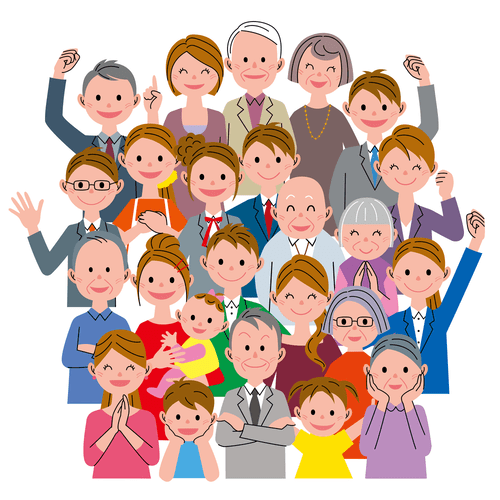Fundamentals: The state of zkSync: scaling, security, UX, traction, challenges, financials Fundamentals ep 75 on Apple Podcasts
Most user experience designers have basic knowledge of HTML, CSS, and Javascript. Although, they haven’t necessarily learned it to become a UX designer, more so because of past experience or because they want to collaborate better with their engineering colleagues. From a business perspective, designing first-class user experiences is key to ensuring customer satisfaction and building brand loyalty. Only if a product or service is hassle-free and enjoyable will the user want to return. The definition of a UX designer’s role will vary depending on which industry or company you talk to. There’s a growing tendency for companies to hire for very specific roles, such as UX researcher or interaction designer, to cover all of the different aspects of user experience.
- Likewise, since the Pokemon Go craze hit, augmented reality has also been working its way into the mainstream.
- UX engineers bridge the gap between design and development, working with either design or engineering teams.
- UX engineers should understand design systems well because the solutions UX engineers create should be both visually and functionally consistent.
- From e-commerce websites to dating apps, from CRM software to web-based email clients, each and every online journey you take has been carefully designed by a UX professional.
- A UXE cares deeply about the user experience and is heavily involved in impacting it.
UX design is also concerned with shaping the emotions of the user, although it tends to take a broader, big picture view of the entire user’s experience with the product. On top of focusing on the right typography and colors, UX designers are also concerned with motion design, the tone of the content, and information architecture, among others. So, a good user experience directly contributes to a business’s revenues. In addition, UX design can help businesses by reducing development costs, creating a competitive advantage and reducing support costs. By investing in quality UX design, businesses can improve user satisfaction and drive growth. User experience designers are in high demand across the industry, and you can expect to earn a good living as a practitioner.
Required Skills for a User Experience Engineer
After all, no one will use a product that serves no purpose. If you’re already working full time in another field, practice your UX design skills on the job by identifying a potential challenge and designing a solution. I love the blend of skills that I am able to use daily as a UXE. If you are a creative individual who wants to work closer with design teams this may be the perfect role for you too. UX Engineers fill a void that can be beneficial to the handoff between design and development.
Streamlining this bottleneck can reduce time to market, saving companies money while increasing their competitiveness. That’s where UX engineers come in and why they’re in demand. Since UX engineers must connect screens, models, and pages, they need to have a solid understanding of navigation and information architecture. At a bare minimum, they must be highly competent with primary front-end programming languages like HTML, CSS, and Javascript.
UX Engineering
As the tech industry grows, the field of UX design is becoming increasingly varied. UX designers can find themselves working on a wide range of projects within various contexts. With prototypes to hand, the UX designer will then conduct usability tests to see how users interact with the product. This shows whether or not the user can complete their desired tasks or if changes need to be made. The user experience designer then uses this feedback to identify the user’s goals, emotions, pain points, and behaviors. Designers can create wireframes and upload files and assets, while UX Engineers can log in and leave comments in real-time.
In terms of tools, they use MindManager, Adobe Illustrator, Adobe Photoshop, Iconjar, Sketch, and Balsamiq, to name a few of the most popular. In this course, you will gain an introduction to the breadth of UX design and understand why it matters. You’ll also learn the roles and responsibilities of a UX designer, how to confidently talk about UX and practical methods that you can apply to your work immediately. As indicated by Don Norman, User Experience is an umbrella term that covers several areas.
1 The difference between UX and UI design
User experience (UX) engineers combine technical skills with their knowledge of design aesthetics to build the user-facing aspects of digital products like websites, software, and apps. A UX Engineer is part designer, natural language processing part developer, as well as the link between the two. They’re Front-End engineers who have a unique skill set that’s distinct from both. The below image shows where they sit among all the other web development roles.
If you’re not building a positive product and brand experience for your customers, you’re not building a business. Your end-user needs to be your first user, and you can do this by hypothesizing, testing, and building people-conscious products from day one. UX designers are often asked to contribute towards business development projects that are not traditionally within a designer’s scope of work. This is largely because they often provide a unique, empathetic lens that other core business roles don’t tend to focus on. User interface design works closely with user experience design. Together, UX and UI designers conduct user research, measure usability, and are constantly testing designs for any stand-out success to replicate or error to fix.
Network in programming and design communities
If you’re interested in technology, thrive on variety, and love to solve problems, user experience design might be a good fit. If you’re a creative thinker with a strong aesthetic sense, consider pursuing user interface design. While a degree isn’t always necessary to get a job as a UX or UI designer, having one can often open up new opportunities. UX designers might get a degree in computer science, psychology, human-computer interaction, or design.

Working with Storybook will require additional niche technical know-how specific to this tool. There is a likelihood that if you are working with a design system and component library, the documentation is utilizing Storybook. This may be a mix of design related skills from prototyping to UX Principles to wire-framing.
What is UX design? Skills, tools, and advice
The difference between the two is that a UX designer is more involved in user research, making sure they’ve considered the look and feel of a product before they actually start designing. They worry about things like color palettes, fonts, and icons. A UX engineer often has the skillset of a front-end engineer but also the working know-how of UX design principles.

Designers can use these code components exactly like any other design asset (meaning they don’t have to learn to code), except they have much higher fidelity and functionality. Designers can drag and drop these components to build fully functioning prototypes–identical to those a UX engineer would develop. When UX engineers convert designs into code, they work closely with designers, iterating until the component or layout is right. Next, UX engineers present their code to their fellow developers for review.
How much does a UX Engineer make?
It’s not easy to conquer all of these UX design skills, and it’s certainly not easy to become an expert in all of them. UX design courses—linked later in this piece—tend to have you specialize in a few specific areas of design and give you the basics of all the above. You need quite a few hard skills to earn the title of UX designer. Most of these skill sets you will learn in a UX design course or degree. There are certain practical skill sets a designer needs to learn to become a UX designer.
There is no point in solving problems that users don’t care about; they won’t pay to solve those problems, and that means your company won’t make money. If a product isn’t usable, the experience of using it can never be good. UX designers want to create products which can, ideally, be tailored to meet a user’s specific needs, but which provides functionality that is predictable.
Learn more about User Experience (UX) Design
By collaborating, these roles are able to come together to create top-notch experiences for users. The need for many of these roles has been increasing in recent years, especially with the recognization of the importance of design systems within organizations. Designers may only be able to mock up several screen size views such as mobile, tablet, and desktop.


Leave a Reply